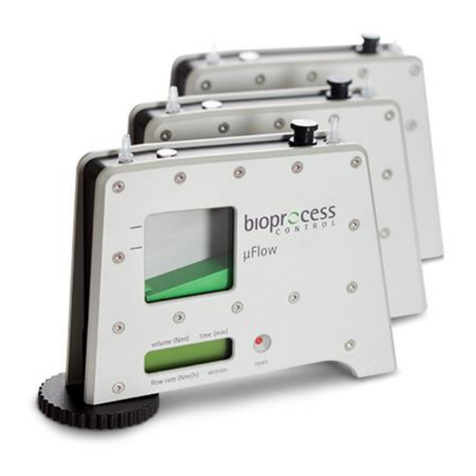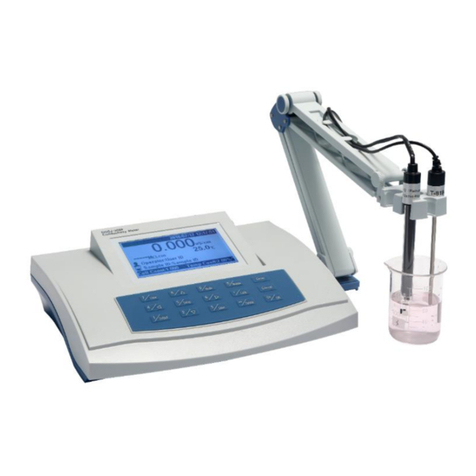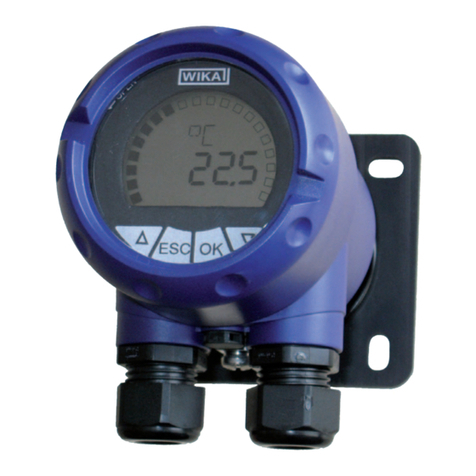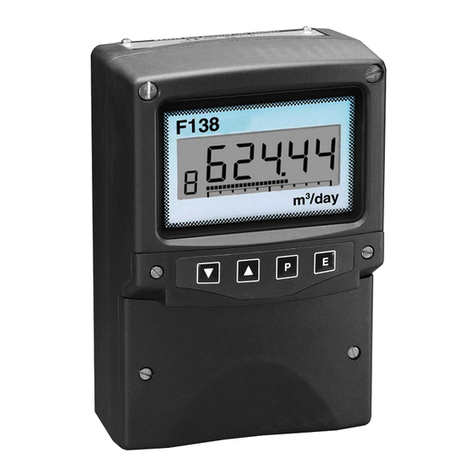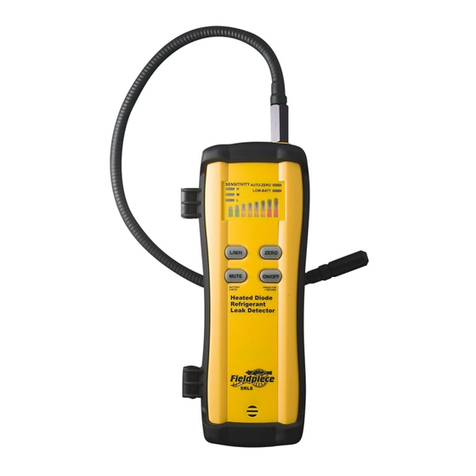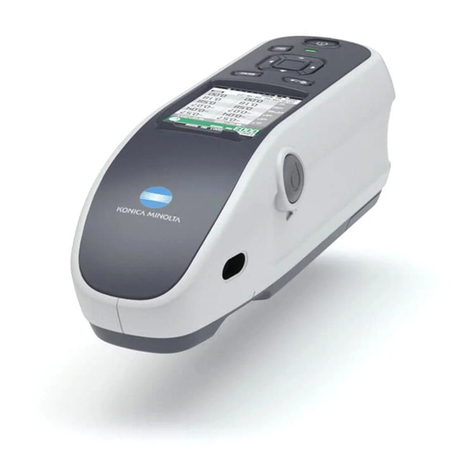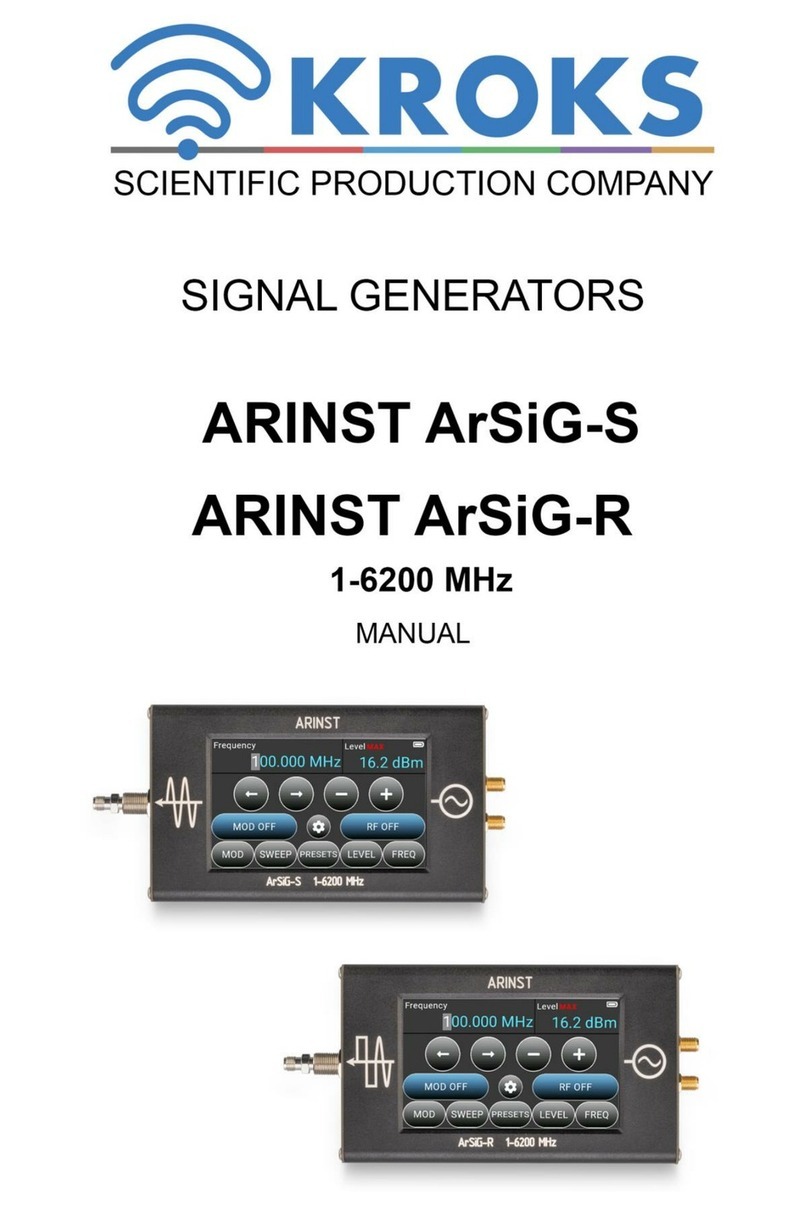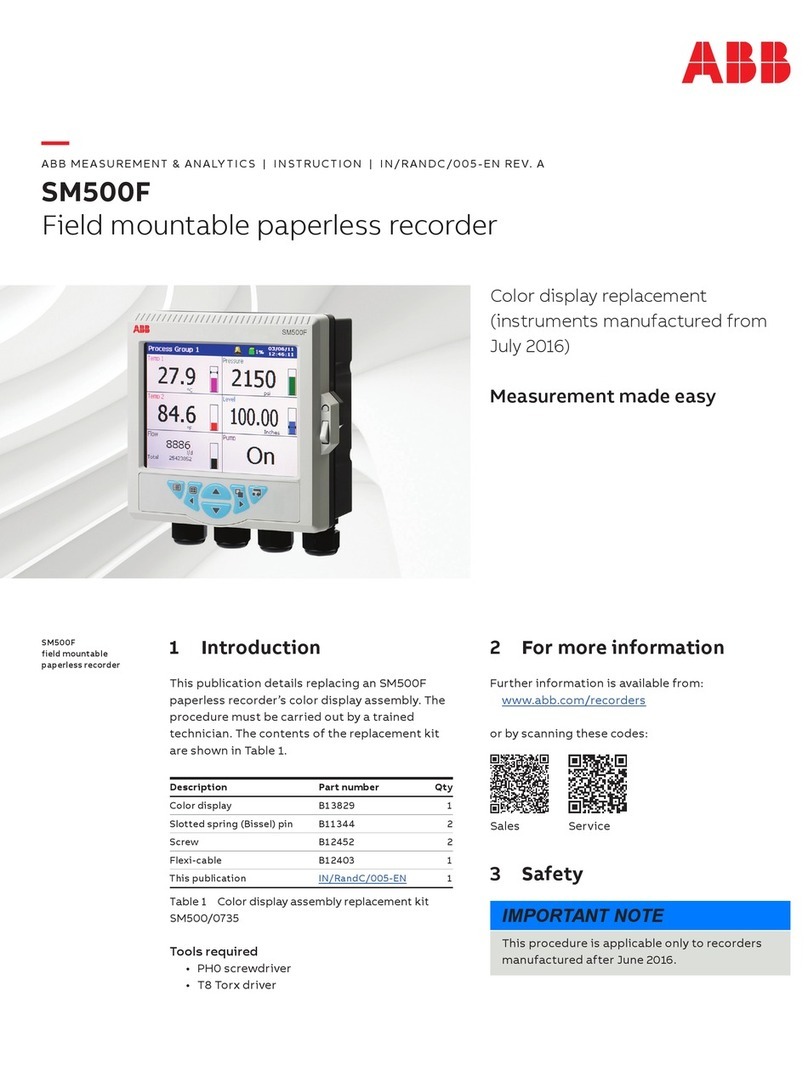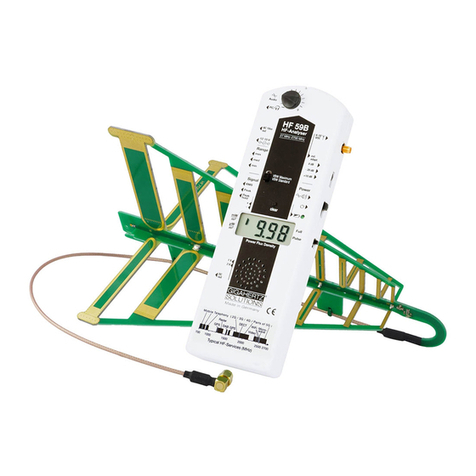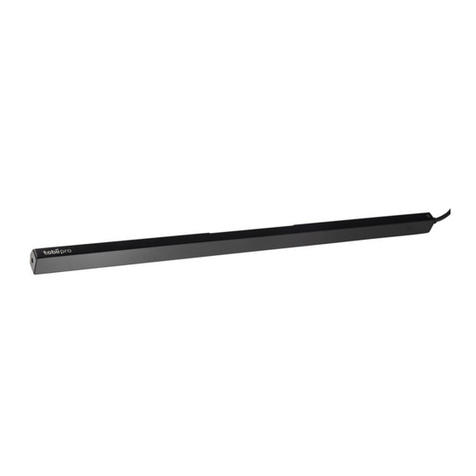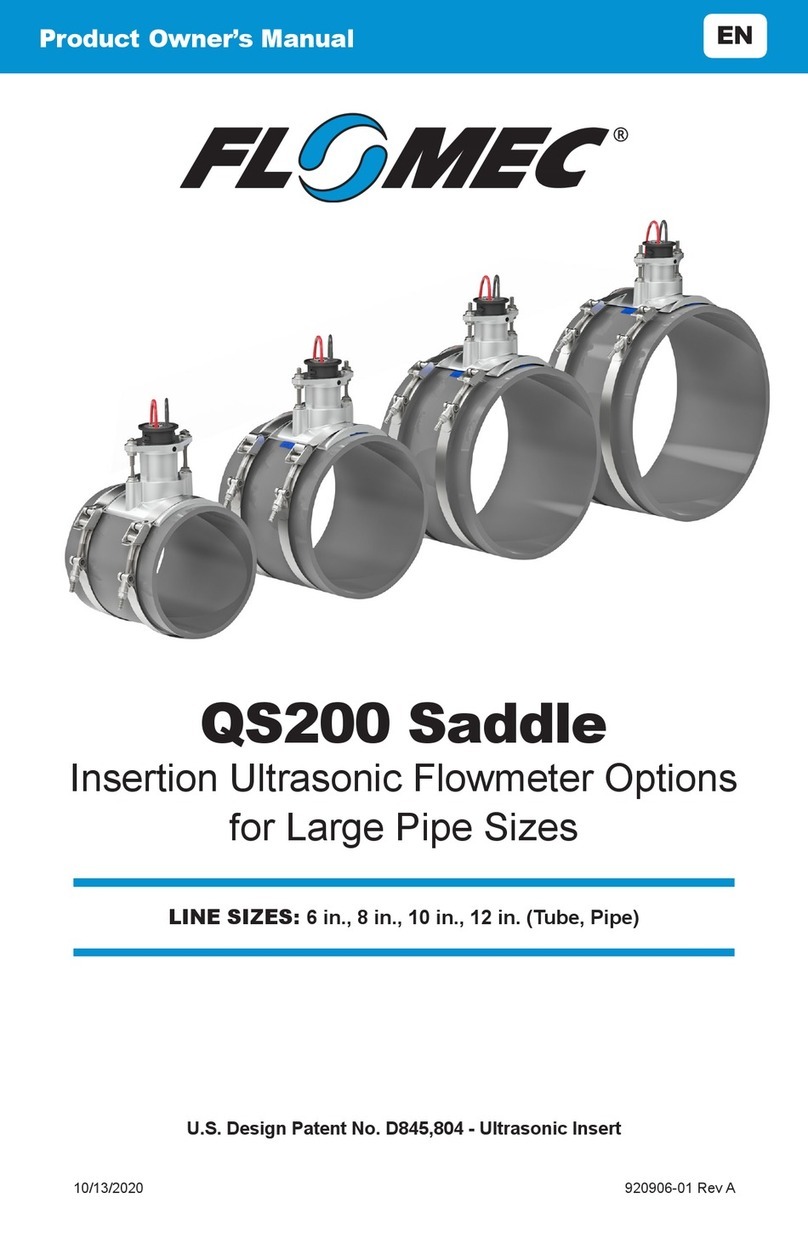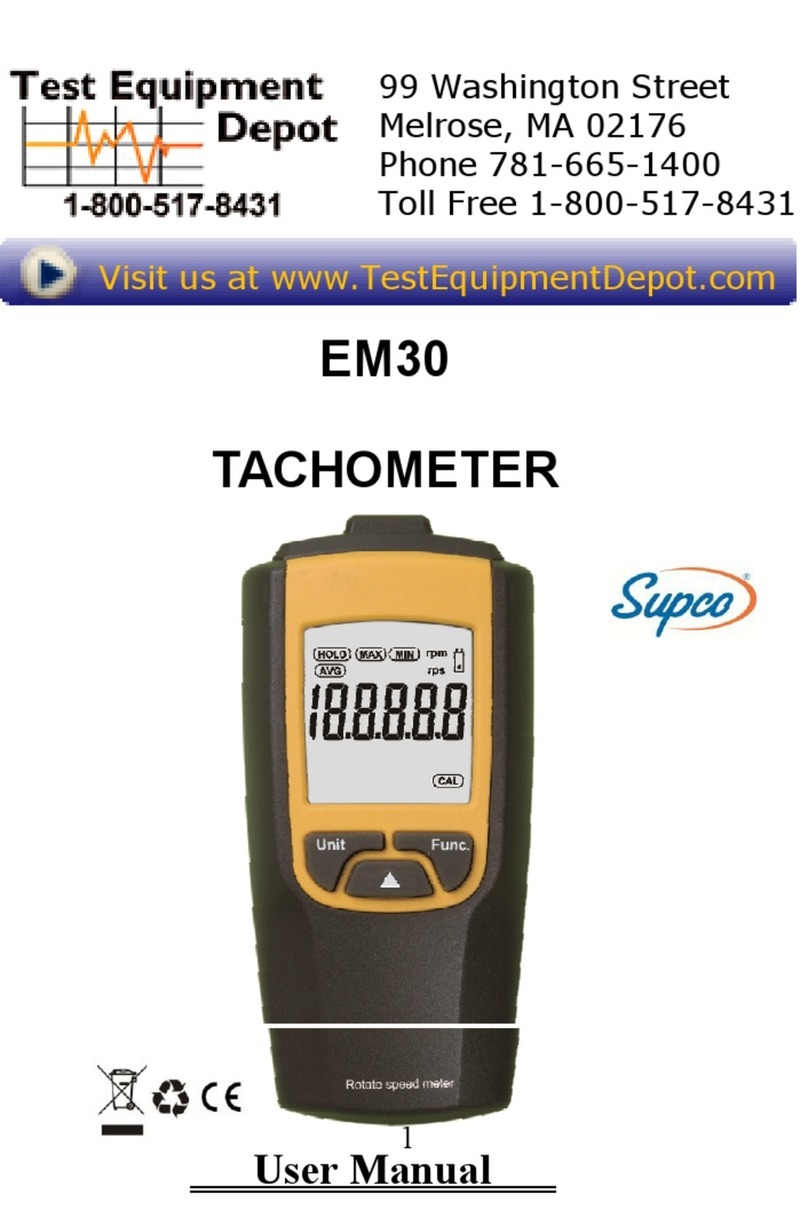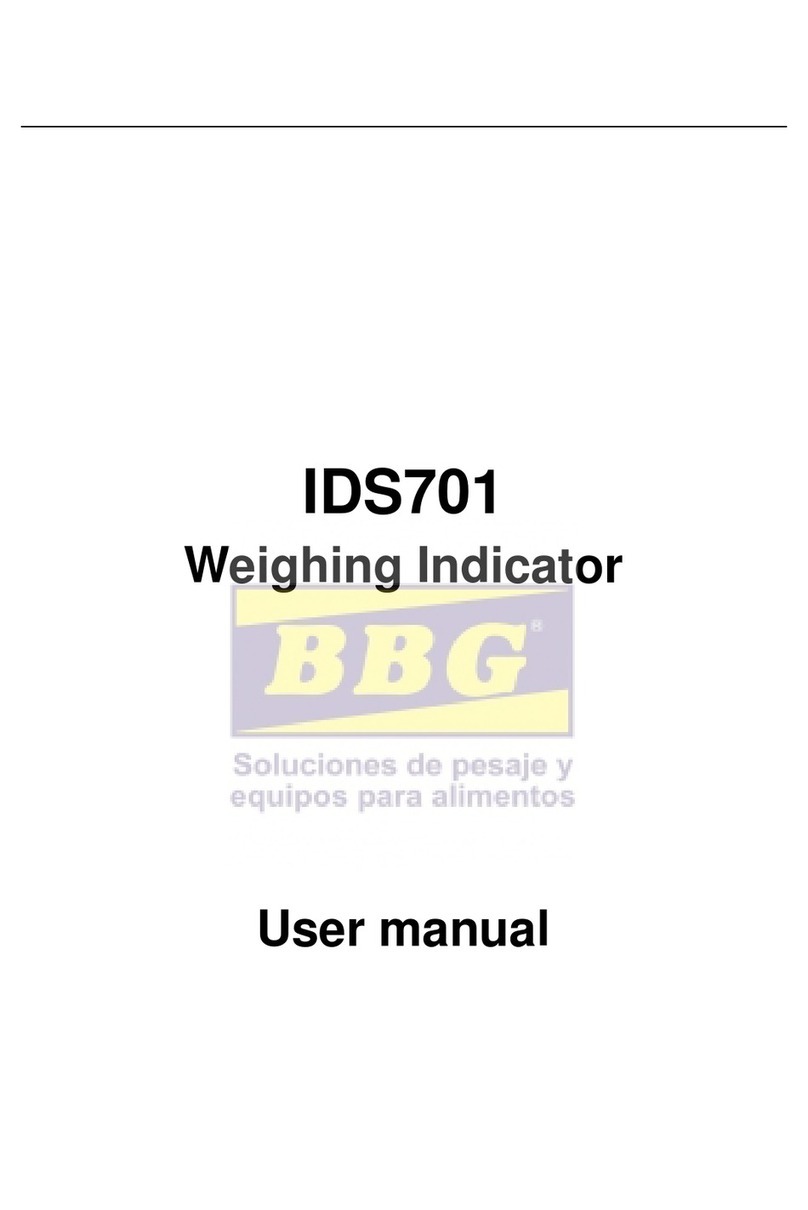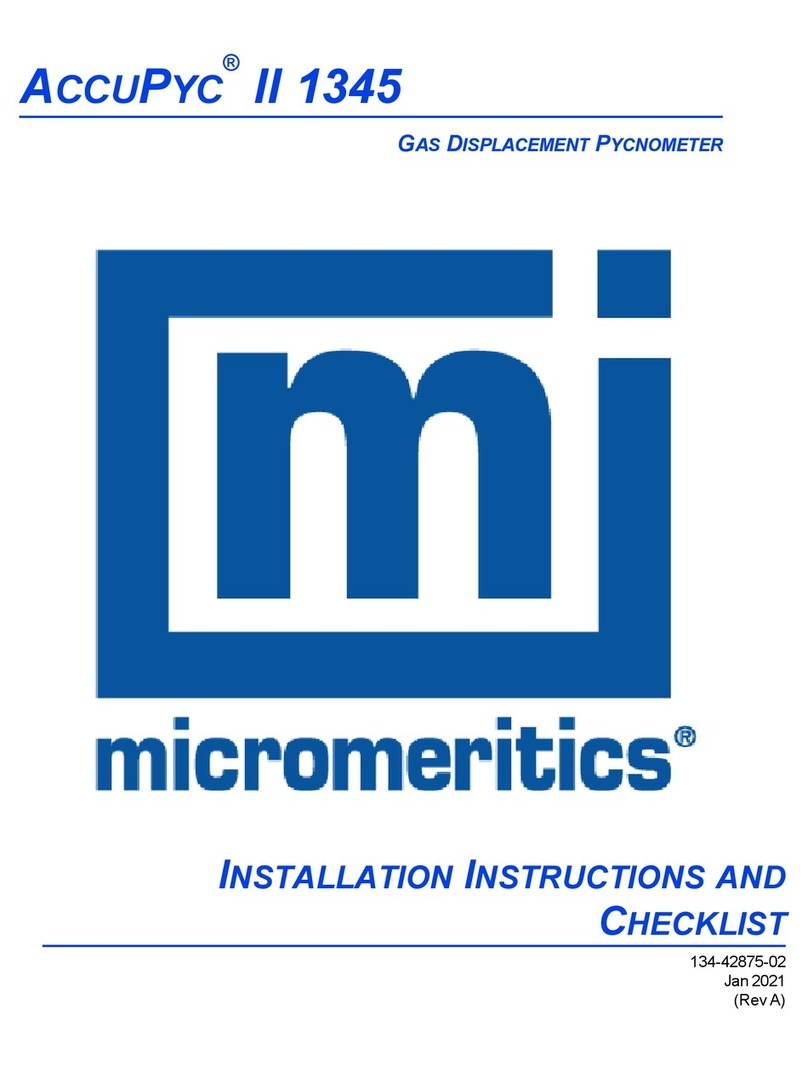BPC instruments Move User manual

s
BPC Move
Agitation System
www.bpcinstruments.com
Mobilvägen 10, 223 62 Lund, Sweden
Contact Us :
+46 (0)46 163950
OPERATION AND
MAINTENANCE MANUAL

2
Version 1.0 November 2022
The latest version of this manual can always be downloaded from:
https://bpcinstruments.com/bpc_products/
Any questions related to this document should be directed to:
BPC Instruments AB
Mobilvägen 10
SE-223 62 Lund
Sweden
Telephone: +46 (0)46 163950
Email: info@bpcinstruments.com
Web: https://www.bpcinstruments.com
This document contains proprietary information protected by copyright. No part of this
publication may be redistributed in any form whatsoever or translated into any language
without prior, written permission of BPC Instruments AB.
© 2022 BPC Instruments AB. All rights reserved.
Produced in Sweden.

3
LIST OF CONTENTS
General Information…..………………………………………………………………………………………………
4
Quick Guide………………………………………………………………………………………………………………..
7
Important Notes…………………………………………………………………………………………………………
8
Chapter 01: Overview…………………………………………………………………………………………………
10
Chapter 02: Description and Operation…………………………………………………………………….
11
2.1 BPC Move – Functionalities……………………………………………………………………
11
2.1.1 Operation………………………………………………………………………………..
12
2.1.2 Torque…………………………………………………………………………………….
13
2.1.3 Acceleration…………………………………………………………………………….
13
2.1.4 Advanced…………………………………………………………………………………
13
2.2 BPC Move – Features and Applications…………………………………………………….
14
Chapter 03: Maintenance……………………………………………………………………………………………
15

4
GENERAL INFORMATION
Before operating the BPC® Move (hereafter referred to as “the instrument”, “the system”, “the equipment” or
“BPC® Move” interchangeably) from BPC Instruments AB (hereafter referred to as “BPC Instruments”, “BPC”,
“Bioprocess Control” or “BPC Instruments AB” interchangeably), carefully read this operator manual for the
instrument, any separate instructions for other equipment used together or in conjunction with the instrument
as well as the safety instructions for any and all chemicals used in the process of utilizing the instrument.
Safety Information
When performing experiments with the instrument, always use protective eyewear, gloves, and lab coat. Always
make sure there is adequate ventilation and take proper precautions when handling electrical devices near
water or explosive gases. Make sure to tie back any hanging objects, such as hair and clothing, when working
near rotating or otherwise moving parts.
Do not modify the instrument without the prior consent of the manufacturer. BPC Instruments AB do not assume
responsibility for any errors due to equipment modification.
Do not clean or service the instrument while it is running.
Do not expose the instrument to mechanical vibrations or high frequency radio transmissions.
Never operate the instrument in a way it was not intended.
Never operate the instrument, nor let anyone else operate it, without proper training.
Never use the instrument outside or in environments with parameters outside of the instruments recommended
range.
Never connect additional electrical equipment not supplied by BPC Instruments AB for the express purpose of
using with the instrument. This is true even if the connections can mate.
Always keep the instrument level and on a flat and stable surface. Failing to do so can, among other things,
generate an erroneous gas reading.
Always make sure all safety guards are in place and working before operating the instrument.
Always make sure that all parts are functioning properly immediately after start-up.
Always keep the instrument clean.
Always make sure to have access to relevant chemicals before starting an experiment.
Always dispose of parts and chemicals according to applicable rules in the country of usage.
Periodic maintenance of the instrument and its various accessories is essential. Always make sure they are in
working condition. If service or spare parts are required, please visit https://webshop.bpcinstruments.com or
contact BPC Instruments AB directly or one of its representatives.
Always make sure to connect the power supply so that it is easy to remove from the mains power outlet and so
it doesn’t risk becoming damaged.

5
Limited Warranty
The product warranty provided with the instrument corresponds to the stipulations in Orgaline 2012, unless
otherwise agreed upon with BPC Instruments AB (“BPC”). BPC Instruments AB (“BPC”) reserves the right to
correct any possible errors, mistakes, changes, updates, technical data or otherwise relevant information in this
manual or any other documents, where applicable by law.
Electrical Safety
Compliance is required with respect to voltage, frequency and current requirements indicated on relevant parts.
Improper operation, damage to the equipment, fire or otherwise undesired effects might be caused by
connecting to a different power source. There are no user-serviceable parts in the equipment, unless otherwise
agreed upon with BPC Instruments AB (“BPC”).
Technical Specification
Dimensions: 4.6 x 4.5 x 17.5 cm
Weight: 0.48 kg
Operating Environment*: Indoor 20 - 60 °C
Operating Humidity: 10 – 90 % RH non-condensing
Power Input: 24 V DC / 0.7 A
Maximum Altitude: 2000 m
Power Supply (Switching): External AC / DC Adapter
Manufacturer and Manufacturer Product Name: CUI Inc - SDM65-24-UD
Power Input: AC 100-240 V ~ AC 50-60 Hz (1.6 A – 0.7 A)
Power Output: 24 V DC / 2.71 A
*The temperature range which the motor operates independently of the temperature of the mixing/process in
the bioreactors.
Delivery Checks
As soon as taking delivery of the instrument and before putting it into service, inspect the package and make
sure there is no damage. If there is any reason to believe that the instrument has not arrived in a suitable
condition, inform the transport company and request that they document the issue appropriately, self-
document using photographs and contact your seller for further information.
Read the operations manual in its complete form. This will assure that the instrument is used appropriately and
will serve as a guide to identify any damage to the instrument or parts thereof.
The following parts should be included in your purchase. If this is not the case, please contact your seller in order
to receive the missing parts.
1 BPC® Move (Art No. 20-0001-01)
1 Quick-Guide
1 BPC Move Main Unit (Art No 20-0101-01)
1 BPC Move Power Adapter (Art No 20-0102-02)
1 BPC® Move Kit (Art No. 20-0002-01)
1 Quick-Guide
1 BPC Move Main Unit (Art No 20-0101-01)
1 BPC Move Power Adapter (Art No 20-0102-02)
3 Stirrers (0.5, 1, and 2 L) (Art No 01-0105-02 (0.5 L) / 12-0103-01 (1 L) / 02-0102-02 (2 L))
3 Axis Couplings (Art No 01-0112-01)
1 Hex Key (Art No 01-0113-01)
1 Attachment Band (Art No 20-0103-01)

6
Optional Equipment
The following equipment can be bought from BPC Instruments AB and its distributors. They are not required to
perform experiments with the instrument, but they are fully compatible and, depending on the use case, can
increase the effectiveness, abilities, or functions of the instrument.
Lid GL 45 with Twin Connectors (Art No 01-0203-01)
Tubing Clamp 6 mm (Art No 01-0108-02)
Tygon® Tubing 3.2 x 1.6 mm (Art No 01-0405-02)
Glass Bottles (0.5, 1, and 2 L) (Art No 01-0101-01 (0.5 L) / 12-0101-02 (1 L) / 02-0101-02 (2 L))
For a complete listing of available systems and parts from BPC Instruments AB, for this instrument and others,
please visit our online store at https://webshop.bpcinstruments.com or contact our sales team via email at
[email protected] and via phone at +46 (0)46 163950.
For assistance with usage of the system, or parts of it, please contact our support team via email at
[email protected] and via phone at +46 (0)46 163950.
Please have the serial number of your instrument easily accessible as this will allow us to assist you in a quicker
and more accurate fashion.
Before Getting Started
Read this manual before installing and using the instrument. In addition, keep this instruction manual for future
reference and make sure it is easily available for people who regularly use the agitation system.
Contact Information
BPC Instruments
Mobilvägen 10
223 62 Lund
Sweden
E-mail: [email protected]
Phone: +46 (0)46 163950
Website: https://www.bpcinstruments.com
Webshop: https://webshop.bpcinstruments.com
Swedish organisation number: 556687-2460

7
Quick Guide

8

9
IMPORTANT NOTES
BPC Move can be applied to mix a diverse range of contents in bottles with different volumes,
the only difference between them is the size of the stirrer, while all other components remain
the same.
When inserting the motor together with the metallic rod into the stirrer tube, make sure that
the lid is properly sealed to ensure that the equipment does not risk being damaged.
How to connect the stirrer to the motor?
First, make sure that the agitation system is off before connecting or disconnecting the stirrer.
Failing to do so might damage the equipment.
Note: It is very important that the motor axis and the stirrer axis meet in the middle of the
axis coupling (WITHOUT TOUCHING). If the stirrer axis puts downward tension on the stirrer
tubing, it might, over time, drill a hole through the bottom of the stirrer and compromise the
air seal of the setup. Approximately 5 – 7 mm between the two metal shafts within the axis
coupling is ideal (see figure above).

10
CHAPTER 01: OVERVIEW
BPC Move is a standalone agitation system designed for chemical, biological and
biotechnological applications. The intended use is mainly in laboratory environments to
provide well mixed contents through strong and reliable agitation of different types of
substrates.
This instrument offers a superior performance and agitation control compared to magnetic
stir bar. It can be applied for various mixing procedures, without any other instrument for
short-term operations, such as dissolving a solid in a liquid, or as part of our main systems
(AMPTS, Gas Endeavour, and Bioreactor Simulator) for the agitation of long-term biological
processes (several months).
BPC Move is simple to use, compared to our standard/smart agitation system, since it only
needs a power supply to function (no need for external motor controller, motor controller
signal cable, and brushless DC motor cables). The different functionalities of the instrument
are controlled with a rotating button and a display at the top of the motor. It has a
straightforward and user-friendly interface that makes it easy to set up the optimal condition
for a specific application.
BPC Move offers everything you need to have an excellent and unique agitation control. This
component allows the user to set different operation modes (simple, continuous, alternating
and intermittent), speed control on a range up to 600 rpm (3 times more speed compared to
our previous agitation system), different agitation movement (clockwise [CW],
counterclockwise [CCW] and interchanging), and on and off time.
In order to function, BPC Move (A) needs to be connected to a stirrer (B) and a vessel (C) that
contains the medium that will be mixed:
A. BPC Move
B. Stirrer and axis coupling
C. Vessel

11
The BPC Move is connected to the stirrer through an axis coupling and this setup is placed at
the top of the vessel. The stirrer contains a long axis rod inside a rubber, and a lid GL 45 with
twin connectors. The bent stir rod can be fastened to the motor by attaching a helical coupling
to it by using an Allen key to fasten the screws in the coupling. The axis rod is bent which
ensures a stirring effect when the axis rotates.
The vessel is a glass bottle with a GL 45 opening of different sizes (0.5, 1, and 2 L) and designs.
A rubber sealing that sits on the stirrer ensures that the environment inside the vessel can be
kept hermetically sealed.
Note: For applications involving airtight condition, make sure to remove the silicone ring used
to waterproof, located on the top of new glass bottles, before adding the stirrer and the lid
(Step 3 of how to install the stirrers – see page 8). Glass bottles provided by BPC Instruments
come without the silicone ring.
CHAPTER 02: DESCRIPTION AND OPERATION
2.1 BPC Move – functionalities
Turning it on: The only step required to start using BPC Move is to connect it to a power
source. Once BPC Move is connected, the instrument will start automatically. Once the
instrument is on, the screen will display the menu option and the default configuration for
operation mode, direction and speed (when used for the first time) or previously applied
configuration. If BPC Move is off but kept powered, the user needs to press the green button
for approximately 3 s to turn it on.
Turning it off: To shut down the instrument, the user needs to be on the main screen and
press the green button for approximately 3 s.
Note: If the motor gets overheated, it will turn off by itself to avoid damage of the instrument.
If this happens, it is recommended that the user disconnects the device from the power
supply and wait until the device cools down before plugging it again.
The user can access the menu by clicking the button one time for a short period of time. The
functions available in the menu are summarized below. These functions can be explored by
rotating the green button clockwise (CW) or counterclockwise (CCW).

12
2.1.1 Operation
Schematic representation of how to navigate the operation function from the main screen:
In operation, the user has the options described above. First, to be able to apply the specific
settings in each mode, the user has to get into the option mode and select the desired type
of operation. There are 4 possible options of operation modes:
Controllable parameters
Operation modes
Speed (rpm)
Direction
On and off time
Simple
-
-
Continuous
-
Alternating
-
Intermittent
1) Simple: This is the most basic operation mode available on the instrument. The only
parameter that can be controlled is the speed (0 – 600 rpm). The desired speed is set in
the main screen by using the rotating button. Changes in speed can be done at any time
during the mixing process with outstanding response time (BPC Move can go from 0 to
600 rpm in a few seconds). To change to another mode, the user needs to click the green
button twice and select any other mode by rotating the same button.

13
2) Continuous: In this mode, the user can set the speed and direction of the mixing, which
will be performed without interruption until the user stops the procedure. Both
parameters can be set and adjusted in the CONT settings.
3) Alternating: In this mode, the instrument will alternate the rotation direction (CW and
CCW) according to the time established by the user in ALT configurations. For example, if
the user sets 120 rpm and 30 s, the instrument will apply the specified speed changing the
direction (CW and CCW) of the mixing for every 30 s. It is possible to set speed and time
in the ALT settings.
4) Intermittent: In this mode, the mixing process can be operated at 3 different stages
occurring at irregular intervals (not continuous). Speed, direction and time for each
segment can be set in the INTM settings.
After selecting the desired mode of operation, the user can go into settings for the chosen
mode and make the necessary adjustments, setting up the optimal condition for a certain
application depending on the required level of mixing control.
Note: We recommend using the attachment band if the user notices that the motor is shaking
when it is operating at high speeds. As general guideline, this item should be attached
between the motor holder and the bottle nut when working with 1 or 2 L bottles at speeds
higher than 400 rpm.
2.1.2 Torque
Torque is a vector quantity that can be defined as a force acting on an object that can cause
this object to rotate. It is what makes an object acquire angular acceleration (torque is
equivalent to a force that makes an object accelerate in linear kinematics). The torque can
be adjusted from 10 to 100%. Higher torque provides more strength, but it generates more
heat. We recommend keeping the torque between 50-70%, which will meet the requirement
for most applications and will ensure a long lifespan of the instrument.
2.1.3 Acceleration
The acceleration is a variable that measures the rate of change in velocity (speed) within a
certain period of time. In the BPC Move, the acceleration function has the following range: 0
– 50. Since acceleration is directly proportional to the rate of change in velocity, higher values
for this parameter will promote faster changes in speed. This function is applied in the ALT /
INTM modes.

14
2.1.4 Advanced
In advanced, the user has several features and information for further control of the
instrument:
1) Audio feedback: This function has 2 modes, on and off. If it is on, every time the user press
or rotates the button between the different topics, a sound indicator is activated. Note
that it is not possible to adjust the volume for this feature.
2) Silent mode: This mode refers to the noise generated by the mechanical rotation of the
stir. This function has the on and off option as well. The silent mode is suitable for low
speeds (below 50 rpm). If this mode is activated, the maximum speed available is 220 rpm.
If the user wants to apply higher speeds, the silent mode MUST be off.
3) Screen brightness: Can be adjusted from 10 to 100%.
4) Screen timeout: Can be adjusted from 5 to 60 s.
5) Tooltips: If the tooltip mode is activated, the user gets basic information regarding the
selected feature. For example, if the continuous mode is selected, the screen will display
the following message: “Continuous mode – set velocity and direction in the CONT
settings menu”. This function may be useful to provide specific characteristic of a certain
feature, including the speed limit to apply the silent mode, for example. These tips remain
on the screen until the user gives a short click on the green button.
6) Serial number: Shows the identification number of the instrument.
7) FW version: Shows the current installed firmware version on the instrument (X.Y.Z).
2.2 BPC Move – features and applications
Here, we summarize the main features of BPC Move:
▪Simplicity (BPC Move only needs a power supply to function)
▪More agitation control and power
▪Easy assembling and disassembling
▪User friendly setup – simple mounting on a GL 45 bottle (no need to a laboratory
stand)
▪Straightforward and intuitive interface controlled by only one rotating button
▪Availability of gas-tight conditions
▪Agitator tube compatible to a wide range of chemical and biological substrates
▪Modular design for easy cleaning and maintenance
▪Strong and reliable agitation with minimal risk of irregular spin
▪Feeding and discharging ports for either gas or liquid

15
Additionally, from a more technical point of view:
▪It is possible to set 4 different types of operation modes:
-Simple mode
-Continuous mode
-Alternating mode
-Intermittent mode
▪Speed control up to 600 rpm
▪Reversal of motor direction (CW and CCW) and interchanging
▪On and off time
In terms of applications, BPC Move offers a remarkable high number of possibilities, suitable
for any laboratory that applies mixing operations. A few applications where BPC Move can be
a good choice are highlighted below.
From simple procedures:
▪Dissolve solutes in liquid or mix reactions
▪Biological and chemical sample preparation for different types of analysis
▪Constant and controlled agitation of a large volume of substrate
▪Uniform mixing of samples with high viscosity or processes that involve samples that
change viscosity over time (e.g., from gel to liquid or vice versa)
To more sophisticated applications:
▪Anaerobic digestion processes involving substrates with high content of solid matter
and complex structures that result in slow degradation rate (e.g., co-digestion of
energy crops together with animal manure)
▪Oxygen injection (aeration) for wastewater treatment. A strong and powerful
agitation system increases the injection of oxygen in wastewater, providing the
optimal condition for the quick regeneration of microorganisms that breakdown
organic matter, converting it to carbon dioxide and water
▪Slow and regular agitation of sensitive biological samples
CHAPTER 03: MAINTENANCE
In order for the BPC® Move to perform properly and to maximise the lifespan of the
instrument and its constituent parts, it is important to clean and maintain it properly. To clean
the motor, wipe it with a damp cloth and, if required, a gentle form of detergent. The unit is
not water proof and should not be exposed to liquid.
The stirrers, while also considered consumables, can be autoclaved. Their lifespan will depend
heavily on care being taken when mounting them and on what medium they are used to stirr.
More stirrers can easily be ordered directly from BPC Instruments.
Table of contents
Other BPC instruments Measuring Instrument manuals
